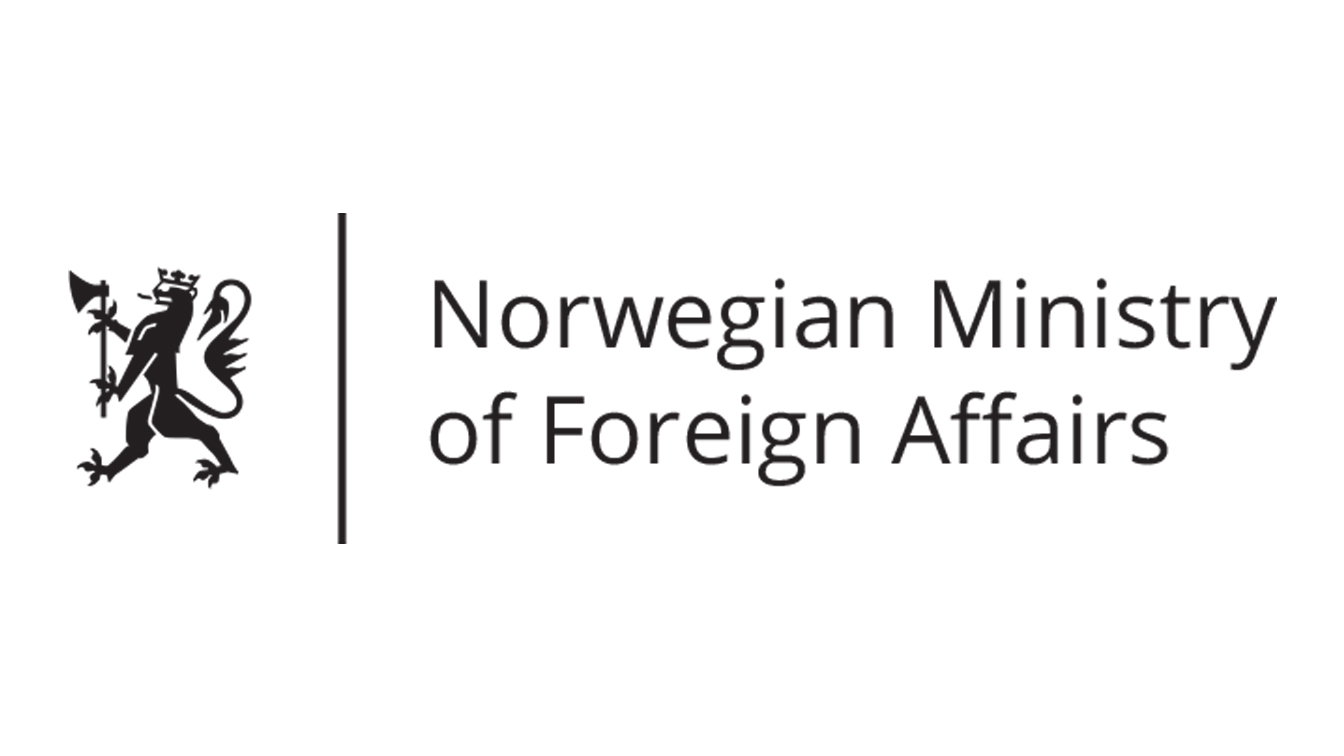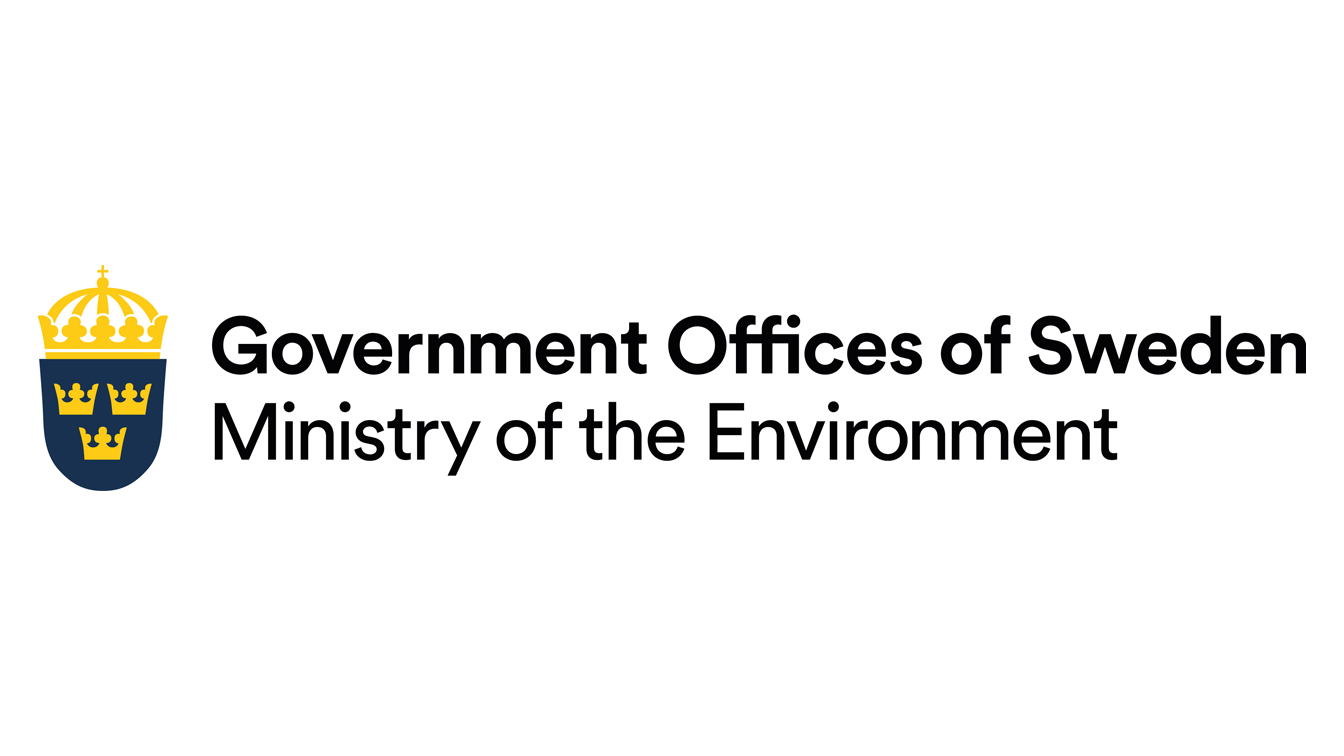The Sustainable Use of Natural Resources: The Governance Challenge
Still Only One Earth: Lessons from 50 years of UN sustainable development policy
Over-exploitation of natural resources harms the health of ecosystems and the wellbeing of people. In the face of environmental crises and growing inequality, we need to act, including developing extended producer responsibility and supply chain legislation, guaranteeing green public procurement, supporting technical innovation to enhance resource circularity, and adopting decision-making processes that include and respect women, Indigenous Peoples, and local communities. (Download PDF) (See all policy briefs)
(Subscribe to ENB)
Natural resources are central to human wellbeing. We cannot live without the clean air we breathe, the plants we eat, or the water we drink. We need natural resources to put roofs over our heads and heat our homes. We need them to survive and to thrive.
The concept of natural resources refers to naturally occurring living and non-living elements of the Earth system, including plants, fish, and fungi, but also water, soil, and minerals. A prominent way to think about natural resources is to look at them in terms of depletion risk: do they regenerate, and, if so, at what pace? Some resources, such as trees and plants, are renewable because they regenerate relatively quickly. Others, such as copper and oil, take much longer to form and are considered non-renewable. Together, natural resources make up a dense web of interdependence, forming ecosystems that also include humans. As such, the distribution of resources shapes the face of our planet and the local distinctiveness of our environments. People have formed different types of cultural, spiritual, and subsistence-based relationships with the natural environment, adopting value-systems that go beyond economic framings.
Nature makes human development possible but our relentless demand for the earth’s resources is accelerating extinction rates and devastating the world’s ecosystems.
The use of natural resources has long been considered an element of both human rights and economic development, leading the United Nations, amid its work on advancing decolonization in the 1960s, to declare that “[t]he right of peoples and nations to permanent sovereignty over their natural wealth and resources must be exercised in the interest of their national development and of the well-being of the people of the State concerned” (UN General Assembly Resolution 1803 (XVII)).
Natural resources are often viewed as key assets driving development and wealth creation. Over time and with progressive industrialization, resource use increased. In some cases, exploitation levels came to exceed resources’ natural regeneration rates. Such overexploitation ultimately threatens the livelihoods and wellbeing of people who depend on these resources, and jeopardizes the health of ecosystems. This risk of resource depletion, notably manifesting in the form of fishery collapses, demonstrates the need to regulate natural resource use to better preserve resources and their ecosystems. The very first UN conference on environmental issues, the 1972 UN Conference on the Human Environment held in Stockholm, Sweden, adopted fundamental principles in this regard.
Stockholm Declaration
- Principle 2: “The natural resources of the earth, including the air, water, land, flora and fauna and especially representative samples of natural ecosystems, must be safeguarded for the benefit of present and future generations through careful planning or management, as appropriate.”
- Principle 3: “The capacity of the earth to produce vital renewable resources must be maintained and, wherever practicable, restored or improved.”
- Principle 5: “The non-renewable resources of the earth must be employed in such a way as to guard against the danger of their future exhaustion and to ensure that benefits from such employment are shared by all mankind.”
The Stockholm Declaration not only addressed resource depletion, but also benefit sharing: the objective to ensure that natural resource use not only benefits the few, but the many, both within and across countries. It also speaks to the principle of inter-generational equity: ensuring that today’s resource use does not compromise the availability of natural resources for future generations. In fact, natural resource use relates to all three dimensions of sustainability: social justice, environmental health, and economic development. The sustainable use of natural resources strives for balance between these dimensions: maintaining the long-term use of resources while maximizing social benefits and minimizing environmental impacts.
Natural Resource Use Has More than Tripled since 1970
Although the 1972 Stockholm Declaration laid out the fundamental principles for sustainable resource governance, the state of play half a century later is sobering. The International Resource Panel (IRP), launched by the United Nations Environment Programme (UNEP), found that the global average of material demand per capita grew from 7.4 tons in 1970 to 12.2 tons in 2017, with significant adverse impacts on the environment, notably increased greenhouse gas emissions.
The IRP also showed that “the use of natural resources and the related benefits and environmental impacts are unevenly distributed across countries and regions” (IRP, 2019, p. 27). For one, the per capita material footprint in high-income countries is thirteen times more than in low-income countries: 27 tons and 2 tons per capita, respectively. As WWF notes, “If everyone lived like an average resident of the USA, a total of four Earths would be required to regenerate humanity’s annual demand on nature.” What’s more, since they generally rely on resource extraction in other countries, high income countries outsource part of the environmental and social impacts of their consumption. At the same time, the IRP has reported that “the value created through these traded materials in the countries of origin is relatively low” (IRP, 2019, p. 65). This imbalance highlights the global discrepancies in the distribution of benefits and negative impacts stemming from resource use, with countries “rich” in valuable resources not always benefitting from their extraction, distribution, and use, yet suffering the most environmental harm.
Human actions threaten more species with global extinction now than ever before.
Fostering Sustainable Resource Governance
A vast array of norms, institutions, and actors influence decisions on natural resources, which is why we speak of natural resource governance. A plethora of national legislation, intergovernmental agreements, regional organizations, certification mechanisms, corporate codes of conduct, and multi-stakeholder partnerships create a complex web of rules affecting how natural resources are used and benefits thereof are distributed.
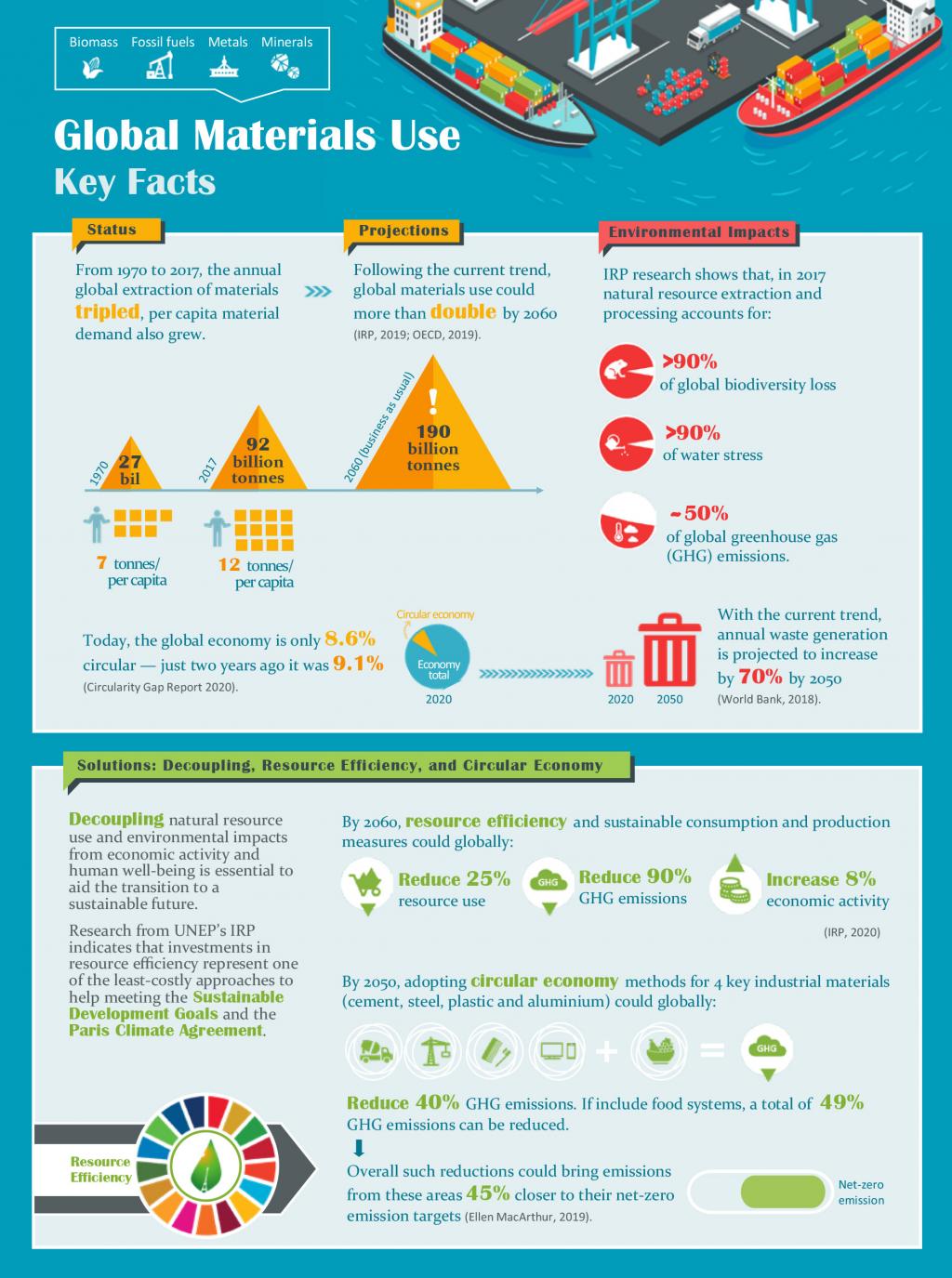
Since Stockholm, numerous multilateral agreements have developed a range of operational guidelines, targets, and standards. Some intergovernmental frameworks, such as the Convention on Biological Diversity (CBD) are broad in focus, while others are resource-specific (Minamata Convention on Mercury) or relate to a specific geographical area (Convention on the Conservation of Antarctic Marine Living Resources). Industry initiatives and multi-stakeholder partnerships often focus on specific resources or sectors. Examples of such initiatives include the Forest Stewardship Council, the Roundtable on Sustainable Palm Oil, the Extractive Industries Transparency Initiative, and the Better Cotton Initiative.
Citizens also have agency over natural resource use: through the representatives we elect to government, our activist engagement, and our consumption and transport choices. For instance, carefully considering food production cycles—what we eat, where and how it is grown, and how it arrives on our plate—can go towards addressing the impact that agricultural expansion has on forests, wetlands, and grassland ecosystems (FAO, 2018; IPBES, 2019). However, this needs to be coupled with systemic change across governance structures.
These mechanisms and institutions are not always complementary; in fact, at times they stand in conflict with one another. Consider, for instance, an energy corporation invoking the Energy Charter Treaty to file arbitration claims against a country’s decision to phase-out coal—a decision taken in accordance with its obligations under the Paris Agreement on Climate Change.
Balancing Rights and Interests over Natural Resources
Determining how people can—and should— access, benefit from, participate in decision-making on, and have responsibility over natural resources has been shaped by concepts such as property and rights.
On the one hand, property rights divide lands and territories into: private property, where rights are held by individuals or companies; common property, where rights are shared by a community; public property, where rights are held by government; and open access areas, where no specific rights are assigned (Aggrawal & Elbow, 2006). Property rights are closely tied to rights over natural resources, which include the right to use a resource, such as hunting in a forest; or management rights that grant authority to decide on use, for example imposing seasonal hunting restrictions. In terms of governance, different types of ownership and access rights can be held simultaneously by several actors: a wetland can be owned by the state, managed by a local council, and used as fishing grounds by communities.
The notion of tenure security indicates that an individual’s rights over natural resources and specific lands are recognized and enforceable. These rights are key to avoiding conflict and fostering social security as well as long-term sustainable resource use.
On the other hand, there are individual and collective rights regarding quality of life. The United Nations Declaration on the Rights of Peasants and Other People Working in Rural Areas (UNDROP), for example, stipulates that “[p]easants and other people working in rural areas have the right to have access to and to use in a sustainable manner the natural resources present in their communities that are required to enjoy adequate living conditions” and that they “have the right to participate in the management of these resources” (Article 5). UNDROP highlights the importance of small-scale sustainable practices, and the need to strengthen the protection and recognition of groups who have experienced historical marginalization and violent conflict over resource use.
Similarly, the UN Declaration on the Rights of Indigenous Peoples (UNDRIP) and International Labour Organization (ILO) Convention 169 (ILO 169) protect the individual and collective rights of Indigenous Peoples. UNDRIP Article 8(2b) stipulates that states shall prevent and provide redress for “any action which has the aim or effect of dispossessing them of their lands, territories or resources.” Both texts also speak to the importance of ensuring the free, prior, and informed consent (FPIC) of Indigenous Peoples in relation to the use of their lands, with UNDRIP Articles 11(2) and 28 underscoring Indigenous Peoples’ right to redress for past FPIC infringements.
There is also the right to a healthy environment, enshrined in regional treaties, including procedural rights on access to information and decision-making processes, as well as the right to clean air, a safe climate, healthy food, safe water, a safe environment for work and play, and healthy ecosystems (UN Human Rights Council, 2019). Ultimately, the effectiveness of these advances in international law depends upon national governments’ readiness to implement them. To date, only 23 countries have ratified ILO 169, and many countries around the world have yet to adopt appropriate legislation to protect the rights enshrined in UNDRIP. To do so, and to protect associated rights under UNDROP and the right to a healthy environment, governments must adopt robust reforms across national policies, laws, programmes, and institutions that prompt shifts in country priorities and ensure the mainstreaming of environmental and social concerns across sectors, focusing especially on empowering marginalized groups. To ensure that decisions across society better address ecological and social wellbeing, prominent actors, including the UN Special Rapporteur on Human Rights and the Environment, are calling for human rights-based approaches to natural resource governance.
Overall, this constitutes a complex architecture, one that is dynamic in nature, often builds on customary practices, and requires balancing “competing” rights and interests through law and policy. Structures are seldom straightforward: there are often overlapping or even conflicting systems in place, and this influences the sustainability of resource governance.
States play a central role in balancing rights and interests. Regulations addressing the extractive sector determine how a corporation’s exclusive user rights may impact the general population’s right to a safe and healthy environment. Approaches to this balancing act, and the distribution, recognition, and safeguarding of rights, and the implementation of associated responsibilities, vary across states and change over time.
At times, this balance of interests favors more powerful actors. Stemming from historical legacies and trajectories in decision-making, structural inequalities exist across resource access, ownership, and tenure security (Oxfam, 2014). These issues disproportionately impact women, rural communities, and Indigenous Peoples, who are often cast as passive recipients to policy change, as opposed to rights holders and key actors in the sustainable management of natural resources.
Women have faced historical exclusion from decision-making processes related to land and resources (UN Women, 2020). Due to enduring patriarchal gender norms across the world, they hold less control than men over the lands and resources they traditionally use and rely on for their livelihoods and wellbeing. Based on an analysis of 180 countries, the Organisation for Economic Co-operation and Development (OECD) found that out of the 164 countries that explicitly recognize women’s rights to own, use, and make decisions regarding land on par with men, only 52 countries guarantee these rights in both law and practice (OECD, 2019). As such, it is important that states ensure that women’s rights over natural resources are realized and protected through appropriate mechanisms.
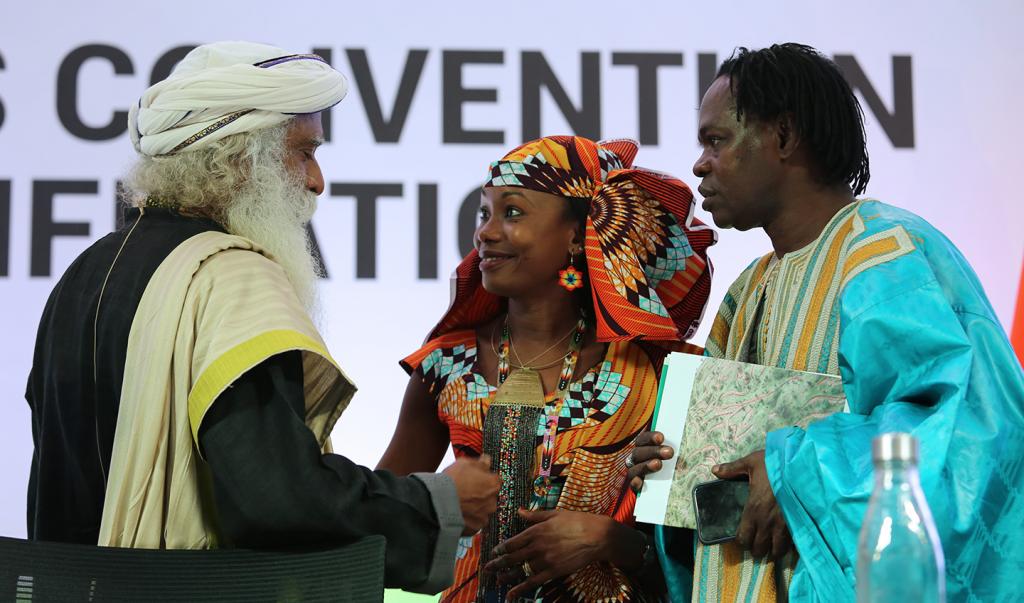
Indigenous Peoples also struggle to have their rights recognized. For instance, in Finland, Sweden, and Canada, legal disputes have arisen over the challenge of balancing between states’ sovereign right to govern and exploit natural resources, and Indigenous Peoples’ rights to self-determination over traditional territories and customary resource use. Globally, conflicts have also emerged over specific policy approaches, such as conservation methods relying on models of strictly protected areas, or the expansion of large infrastructure, such as the installation of hydraulic dams, which contribute to the displacement of Indigenous and rural peoples.
The expansion of international investment treaties further aggravates existing power differentials. In fostering the commercialization and privatization of land and resources, and by often prioritizing investors’ rights and interests over those held by local peoples, they risk restricting public-interest policies and undermine the public’s access to remedial action (Cotula, 2015, 2016).
The Need for Inclusive Governance
Activists and practitioners working to safeguard rights linked to natural resources and secure tenure have been lobbying for strengthened empowerment and participation of local groups, arguing that this fosters more sustainable and equitable resource governance. Alliances between women, youth, Indigenous Peoples, and local community groups have emerged, connecting local-to-global efforts, and bringing international attention to injustices. This includes grassroots alliances such as La Vía Campesina, which has lobbied to protect farmers’ and peasants’ rights since the 1990s and was instrumental in the creation and adoption of UNDROP.
Inclusive decision making is key for sustainable resource governance. Just as gender norms have influenced structures for access and use, they have also shaped our behaviors and the knowledge we acquire, with women holding unique agroecological expertise linked to crop resilience and nutrition (UN Women, 2018). So, unless decision-making processes are gender-responsive and inclusive, they risk overlooking women’s specific needs and roles, and will fail to ensure the inclusion of ecological knowledge important for enabling sustainable practices.
The same can be said for including Indigenous Peoples and local communities in resource governance. The second edition of the CBD’s Local Biodiversity Outlooks illustrates their significant contributions to the safeguarding and sustainable use of natural resources and biodiversity. Important benefits come with inclusive and community-led governance structures and decision-making processes, which, in addition to protecting and enabling sustainable use of resources, can strengthen community support systems and local economies, as well as revitalize Indigenous and local knowledges and languages.
The Need for Transformative Change
Despite efforts since the 1970s, current trends in natural resource use are unsustainable, with potentially devastating results. The 2019 IPBES Global Assessment Report underscored that transformative change is necessary to protect the resources upon which human life and wellbeing depends. The Report also acknowledges that, by its very nature, transformative change is often opposed by those with interests vested in the status quo. Civil society actors therefore underscore the importance for governments to address vested interests and foster inclusive decision making, along with a re-balancing of priorities with regards to rights and interests in order to ensure ecological integrity and social justice (Allan, et.al., 2019). The Local Biodiversity Outlooks mentioned earlier offer important examples of bottom-up approaches to resource governance that can foster sustainability while also addressing historical inequalities.
Bearing in mind global and local inequalities in the distribution of resource use and benefits, achieving transformative change requires bold governmental action, both domestically and in international fora. We need fundamental shifts in production and consumptions patterns, careful attention to value and supply chains, and the fostering of circular resource use and circular economies. Resource circularity breaks with the linear model of “extract-use-discard” towards a “waste-as-a-resource” model that fosters a reduced need for resource extraction, as well as encourages increased reuse, repair and recycling. These objectives are already enshrined in the 2030 Agenda for Sustainable Development, with governments aiming to achieve the sustainable management and efficient use of natural resources by 2030. While implementation has been too slow (IPBES, 2019), there is increased attention to fostering resource circularity, hand in hand with efforts to promote secure labor standards and reduce environmental impacts of resource exploitation. Most notable in this regard are legislative initiatives that increase producers’ responsibility for the impacts of their products throughout their lifecycle. Placing responsibility for post-use disposal on manufacturers significantly increases the material recovery rate and incentivizes less wasteful product design (OECD, 2016).
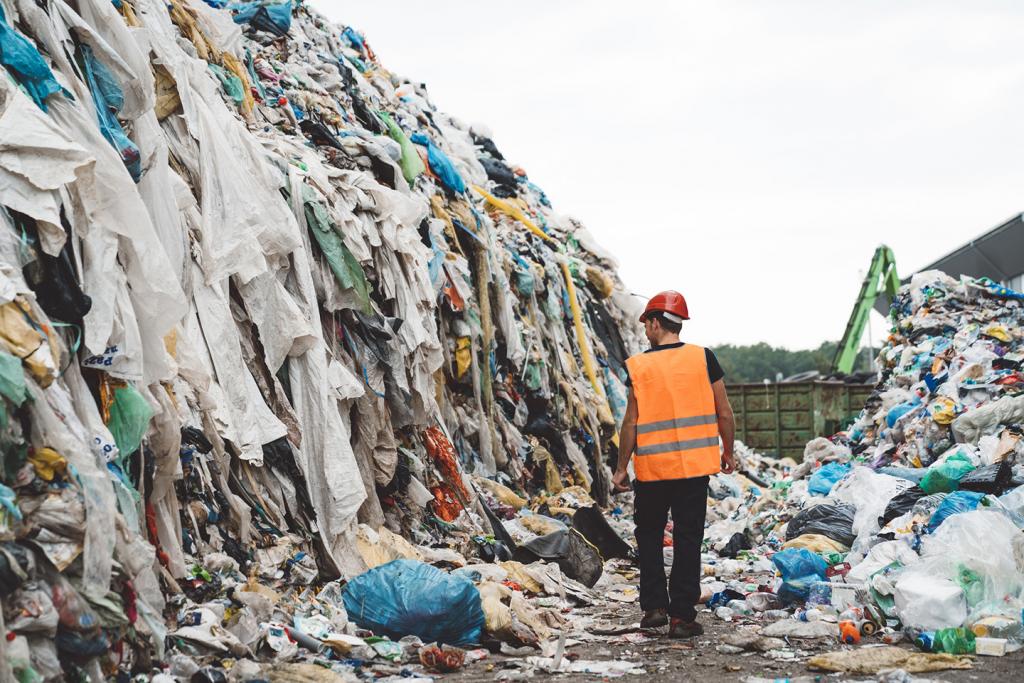
To better balance the three dimensions of sustainable resources governance—social justice, environmental health, and economic development—we must rethink our economic, social, political, and technological systems that currently enable damaging production practices and wasteful resource consumption. Other ways of living are possible, from the ways we structure our societies and economies, the relationships we form with each other and with our ecosystems, to ensuring that the priorities of our leaders align with the interests of the many rather than the few. To realize these shifts, governments should develop extended producer responsibilities and supply chain legislation to enhance fairer distribution of benefits and harms stemming from resource use and promote the protection of human rights in ways that ensure ecological wellbeing and social justice.
Decision making must be inclusive and account for the needs, rights, and knowledges of historically marginalized communities and groups. Governance structures must recognize and support pre-existing sustainable practices at local and regional levels, as well as nourish the emergence of more sustainable patterns of resource use and management. This will require strengthening tenure rights and re-distributing power across all stages of decision-making.
Works Consulted
Aggarwal, S. & Elbow, K. (2016). The role of property rights in natural resource management, good governance and empowerment of the rural poor. USAID. https://www.land-links.org/wp-content/uploads/2016/09/USAID_Land_Tenure_Property_Rights_and_NRM_Report.pdf
Allan, J.I., Antonich, B., Bansard, J.S., Luomi, M., & Soubry, B. (2019). Summary of the Chile/Madrid Climate Change Conference: 2-15 December 2019. Earth Negotiations Bulletin, 12(775). https://enb.iisd.org/download/pdf/enb12775e.pdf
Cotula, L. (2015). Land rights and investment treaties. IIED. https://pubs.iied.org/sites/default/files/pdfs/migrate/12578IIED.pdf
Cotula, L. (2016). Rethinking investment treaties to advance human rights. IIED Briefing. https://pubs.iied.org/sites/default/files/pdfs/migrate/17376IIED.pdf
Food and Agriculture Organization of the United Nations. (2018). Sustainable food systems: Concept and framework. http://www.fao.org/3/ca2079en/CA2079EN.pdf
Forest Peoples Programme, International Indigenous Forum on Biodiversity, Indigenous Women’s Biodiversity Network, Centres of Distinction on Indigenous and Local Knowledge, & Secretariat of the Convention on Biological Diversity. (2020). Local biodiversity outlooks 2. https://www.cbd.int/gbo/gbo5/publication/lbo-2-en.pdf
Intergovernmental Science-Policy Platform on Biodiversity and Ecosystem Services. (2019). Global assessment report on biodiversity and ecosystem services. https://www.ipbes.net/global-assessment
International Resource Panel. (2019). Global resources outlook 2019: Natural resources for the future we want. UN Environment Programme. https://www.resourcepanel.org/reports/global-resources-outlook
Organisation for Economic Co-operation and Development. (2016). Extended producer responsibility: Updated guidance for efficient waste management. https://doi.org/10.1787/9789264256385-en
Organisation for Economic Co-operation and Development. (2019). Social institutions and gender index 2019 global report: Transforming challenges into opportunities. https://doi.org/10.1787/bc56d212-en
Oxfam. (2014). Even it up: Time to end extreme inequality. https://www-cdn.oxfam.org/s3fs-public/file_attachments/cr-even-it-up-extreme-inequality-291014-en.pdf
UN Human Rights Council. (2019). Report by the Special Rapporteur on the issue of human rights obligations relating to the enjoyment of a safe, clean, healthy and sustainable environment. A/HRC/43/53. https://undocs.org/A/HRC/43/53
UN Women (2018). Towards a gender-responsive implementation of the Convention on Biological Diversity. https://www.unwomen.org/en/digital-library/publications/2018/11/towards-a-gender-responsive-implementation-of-the-convention-on-biological-diversity
UN Women (2020). Realizing women’s rights to land and other productive resources. 2nd ed. https://www.unwomen.org/en/digital-library/publications/2020/10/realizing-womens-rights-to-land-and-other-productive-resources-2nd-edition
You might also be interested in
How to Regulate Our Waste-Full World
Going forward, the legitimacy of global governance of hazardous wastes may rest on its ability to enable governments protect the most vulnerable.
Unlocking Supply Chains for Localizing Electric Vehicle Battery Production in India
This study aims to highlight the key supply chain barriers in localizing electric vehicle (EV) battery cell manufacturing in India. It summarizes consultations with 12 companies, as well as experts and policy-makers, to determine the crucial challenges and opportunities in localizing battery manufacturing in India.
IISD Annual Report 2023–2024
While IISD's reputation as a convenor, a trusted thought leader, and a go-to source on key issues within the sustainable development field is stronger than ever, the work happening outside the spotlight is just as valuable.
Senegal's Big LNG Gamble
This report explores Senegal's nascent liquefied nitrogen gas (LNG) industry by assessing the impacts associated with a new fossil fuel-based industry on the country's environment, economy, and society. It does this by responding to three questions: What have been the impacts of the development of LNG on Senegal to date? Is it viable for Senegal to invest further into an industry that is projected to decline? What risks can Senegal expect should it forge ahead with its LNG development plans?


